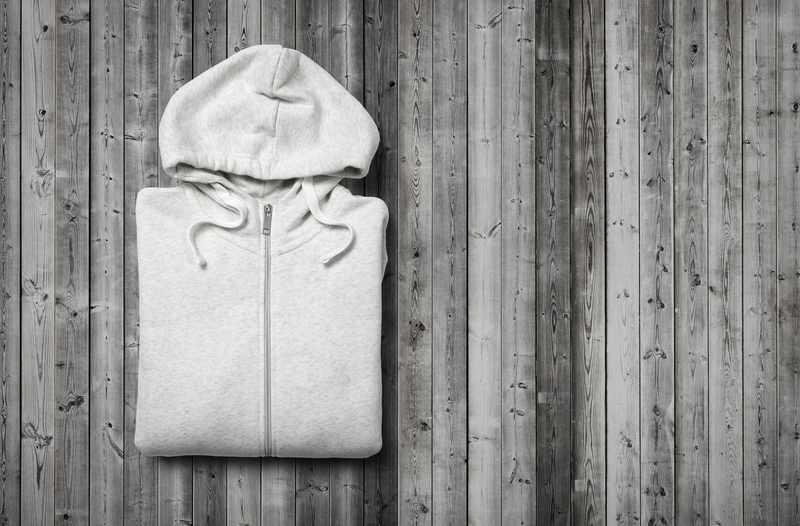How to Teach Kids and Adults to Throw Away PPE Responsibly
The usage of Personal Protective Equipment (PPE) like face masks, gloves, and face shields has skyrocketed in recent years, especially with the emergence of global health crises such as the COVID-19 pandemic. While these tools protect individuals and communities, their improper disposal is creating major environmental and public health concerns. Teaching both kids and adults to throw away PPE responsibly has become a vital component of civic responsibility. In this thorough guide, we will explore innovative strategies, educational approaches, and practical tips for instilling proper PPE waste management habits in people of all ages.
Why is Responsible PPE Disposal Important?
Before diving into teaching methods, it is crucial to understand why proper disposal of PPE is critical. Improperly discarded PPE pollutes terrestrial and aquatic environments, endangers wildlife, clogs waste treatment systems, and poses potential health risks from lingering viruses or bacteria. Learning to discard personal protective equipment responsibly helps prevent:
- Environmental Degradation: Masks and gloves made from synthetic fibers do not biodegrade, contributing to landfill overflow and microplastic pollution.
- Harm to Animals: Wildlife may ingest or become entangled in discarded PPE, leading to injury or death.
- Disease Transmission: Used PPE may be contaminated and can transmit viruses or bacteria if not handled and discarded correctly.

Understanding PPE: What Needs Responsible Disposal?
To teach responsible behavior, it is essential to first identify what constitutes PPE waste. Common examples include:
- Disposable face masks (surgical, N95, KN95)
- Reusable cloth masks (when no longer usable)
- Single-use gloves (latex, nitrile, plastic)
- Face shields (when damaged or broken)
- Shoe covers and disposable gowns
- Antibacterial wipes and tissues used for personal hygiene
*Note: This article focuses primarily on household and community disposal, not medical facility-grade hazardous waste, which follows different protocols.
How to Teach Kids to Throw Away PPE Responsibly
1. Start with Clear Explanations
Children are naturally curious and highly receptive to new concepts. Begin by explaining why it is important to dispose of PPE properly. Use simple language and relatable imagery. For instance:
- "Masks that are thrown on the ground can end up in a bird's nest, or in the water where fish live. This can hurt them."
Interactive visuals, such as photos of PPE litter in parks or oceans, can make the learning experience more impactful.
2. Make Learning Fun: Games and Challenges
Children learn best through play. To encourage positive PPE habits, consider:
- PPE Disposal Race: Set up trash cans labeled for PPE waste. Have kids race to see who can correctly toss their masks/gloves the fastest.
- Sort the PPE Game: Give children a mix of different household items and PPE. Ask them to sort which ones go into regular, recyclable, or PPE-special bins.
- Storytelling and Crafts: Invite kids to create stories or craft projects about "superhero masks" and how they must be properly disposed of to save animals and Earth.
3. Use Age-Appropriate Responsibility
For younger children, model the correct behavior and involve them in simple tasks like tossing their used mask into a specified bin. Older children can take on bigger responsibilities, such as reminding family members or developing creative bin labels.
4. Reward Good PPE Disposal Habits
Positive reinforcement can solidify new habits. Consider using sticker charts, verbal praise, or small eco-friendly rewards for consistent responsible disposal of PPE.
5. Incorporate into School and Home Curricula
Ask teachers to integrate PPE waste disposal into environmental science or health classes. At home, turn PPE disposal into a daily routine--right after returning from outdoors, everyone throws away their used PPE safely and washes their hands.
How to Teach Adults to Dispose of PPE Properly
Adults often juggle multiple responsibilities, and sometimes, habits like littering PPE can be the result of convenience or lack of information. Address these challenges with the following strategies:
1. Provide Up-to-Date Information
- The correct way to dispose of face masks and gloves (in covered, lined trash bins).
- Why PPE should not be thrown into recycling bins.
- Encouragement for using reusable, washable masks when possible.
2. Foster Social Responsibility
Appeal to adults' sense of community stewardship by emphasizing the impact their actions have on vulnerable populations and the environment.
- Share stories or data showing improvements in community cleanliness after responsible disposal campaigns.
- Encourage participation in neighborhood cleanup initiatives, focusing on PPE litter.
- Frame PPE disposal as an act of protecting children, seniors, and frontline workers.
3. Make Proper Disposal Convenient
Many adults will follow rules if access and logistics are streamlined.
- Install clearly marked PPE disposal bins in public areas, apartment lobbies, schools, offices, shopping centers, and entrances of public transportation.
- Promote mobile apps or QR codes near bins that offer quick information about PPE disposal.
- Encourage employers to provide accessible bins and regular collection services.
4. Leverage Workplace and Community Education
Organize seminars, webinars, or quick training sessions that clarify how to discard PPE responsibly. Workplaces should include PPE waste management in their safety protocols, while community centers can display bold posters and signage.
5. Encourage Responsible PPE Disposal Through Policy and Incentives
Municipalities and institutions can:
- Mandate PPE-specific trash bins in all public and private facilities.
- Impose fines for PPE littering to underscore the seriousness of the issue.
- Reward businesses and residential complexes that demonstrate exceptional PPE waste management with certificates or public recognition.
Practical Steps for Everyone
1. Proper PPE Removal and Handling
- Remove gloves or masks by only touching the straps or edges; avoid contact with the exterior surfaces.
- Turn gloves inside out before tossing to minimize contamination.
- Always wash hands or use sanitizer after handling used PPE.
2. Safe Storage Before Disposal
If a PPE waste bin is not immediately available, carry a small, sealable bag for storing used masks or gloves until you reach a designated bin. This reduces the risk of contamination and littering.
3. Never Flush PPE Down Toilets
Flushing face masks, gloves, or wipes causes severe blockages in sewage systems and widespread environmental damage. Always use a trash bin, never the toilet.
4. Distinguish Between Reusable and Single-Use PPE
- Wash and reuse cloth masks whenever possible instead of regular disposal.
- Discard disposable masks, gloves, and shields only when visibly soiled or damaged.
- Follow local guidelines on proper cleaning or discarding of PPE.
5. Educate, Remind, Repeat
Education is not a one-off activity. Repeat guidelines at home, school, and workplaces. Use visual cues like posters, stickers, and digital reminders to cement responsible behaviors for PPE waste disposal.
The Role of Schools, Workplaces, and Communities
Involving Schools
- Launch educational campaigns and thematic days focused on PPE waste reduction.
- Integrate responsible disposal in classroom discussions, science projects, and art activities.
- Host contests for students to design PPE disposal awareness posters or videos.
Workplace Initiatives
- Display PPE disposal guidelines near entryways and common areas.
- Train staff on proper PPE management as part of safety protocols.
- Encourage feedback and suggestions on waste reduction strategies.
Community Outreach
- Organize PPE collection drives and group cleanups of local parks and public spaces.
- Partner with local environmental NGOs to raise awareness about PPE waste.
- Add PPE disposal sections to regular community newsletters and events.
Common Myths About PPE Disposal Debunked
- Myth: PPE is recyclable with regular plastics.
Fact: Most single-use PPE is not suitable for recycling and can contaminate recycling streams. - Myth: It's fine to throw used PPE in any trash bin.
Fact: PPE should be placed in covered, lined bins to avoid windborne litter or accidental human contact. - Myth: Reusable cloth masks can be thrown out with other clothes.
Fact: Damaged masks should be disposed of carefully, especially if contaminated.

Innovations and Future Solutions for PPE Waste
Scientists and environmentalists are working on innovative solutions for the PPE waste crisis. Here are promising developments:
- PPE Recycling: Specialized recycling programs are accepting certain types of masks and gloves--check for local initiatives.
- Biodegradable PPE: Some companies are developing compostable masks and gloves using natural fibers.
- Smart Bins: Waste bins with sensors and digital reminders help encourage correct PPE disposal in public places.
While these solutions are developing, the best way to protect our environment and community health is to discard PPE responsibly every time.
Conclusion: Building Sustainable PPE Disposal Habits
Teaching both children and adults to dispose of PPE properly is essential for maintaining public health and preserving the environment. This comprehensive approach--combining education, convenience, community action, and positive reinforcement--can turn what might seem like a small act into a powerful daily habit. Remember the main points:
- Understand the dangers of poorly disposed PPE.
- Start early and make learning fun for children.
- Inform and motivate adults through evidence, convenience, and policy.
- Engage schools, workplaces, and communities in awareness campaigns.
- Embrace new technologies and innovations as they emerge.
Let's all take responsibility for the PPE we use and set a positive example for future generations. Every mask properly thrown away is a step towards a cleaner, safer planet.
